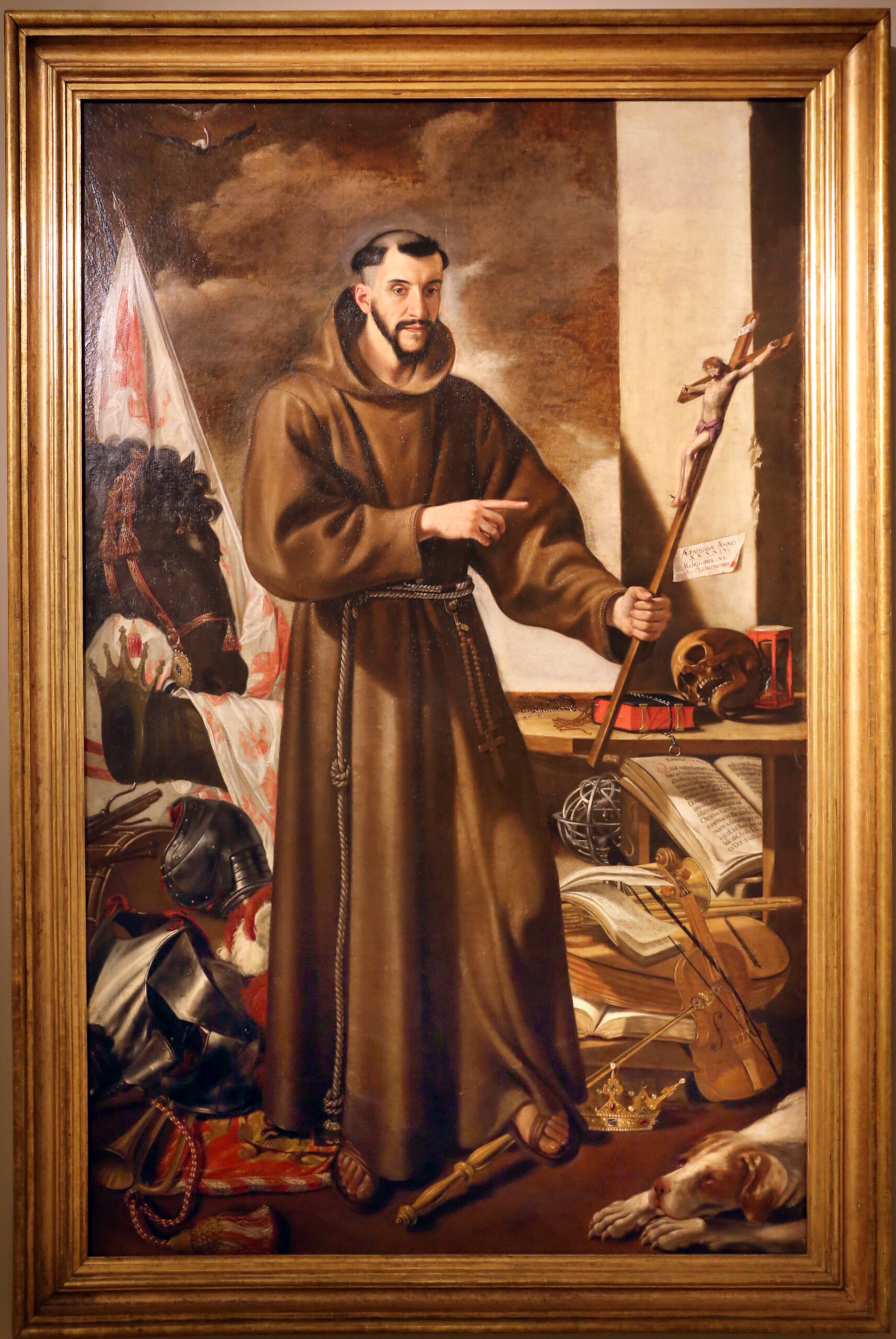Alfonso III ruled alongside and subordinate to his father for many years before becoming Duke himself. The long wait did not change Alfonso’s firm resolve to abdicate in favour of his son not even a year after his rise to power. The reason for this particular choice was perhaps the loss of his beloved wife, the painful event convinced him to leave the rule of the Duchy and the pleasures of earthly life to follow a vocation to prayer and a personal spiritual quest.
The painting shows Alfonso wearing a Franciscan habit, holding a crucifix and pointing to it with his right hand. Surrounding him are many objects, emblems of power and earthly pleasures that Alfonso has abandoned in favour of religious faith, as is symbolically shown by the act of trampling on the staff of power placed next to the crown. Abandoned on the ground or piled up behind Father Giambattista, this is the name he chose for his new ecclesiastical life, two groups of objects can be identified: on the left those alluding to power and combat such as the cuirass, a banner that reveals the mouth of a cannon and the head of a steed. On the opposite side are piled up objects identifying the pleasures and idleness of the court, including a violin, a harpsichord, musical scores and books, an armillary sphere and, in the foreground, a sleeping dog indicating a passion for hunting. This multitude of objects linked to the pleasures of earthly life are contrasted with the religious ones placed neatly on the wooden table against the wall. Only three objects are represented here, a sacred text, a skull and an hourglass (to recall the memento mori), above which is painted a leaflet that reads ‘Aetatis suae anno XXXXIV Religionis VI anno Do. 1635 Octo’. Christian symbolism is again present in the upper left part of the canvas where, among the reddish clouds filling the sky, a dove, emblem of purity, and a pelican, Christological symbol linked to self-sacrifice in favour of others, fly.
Although the painting is characterised by a simple composition, just as clear as the understanding of the symbols inserted, it is nevertheless a precious testimony to Alfonso III’s personal development and his decisions, which affected the history of the Duchy of Este.







